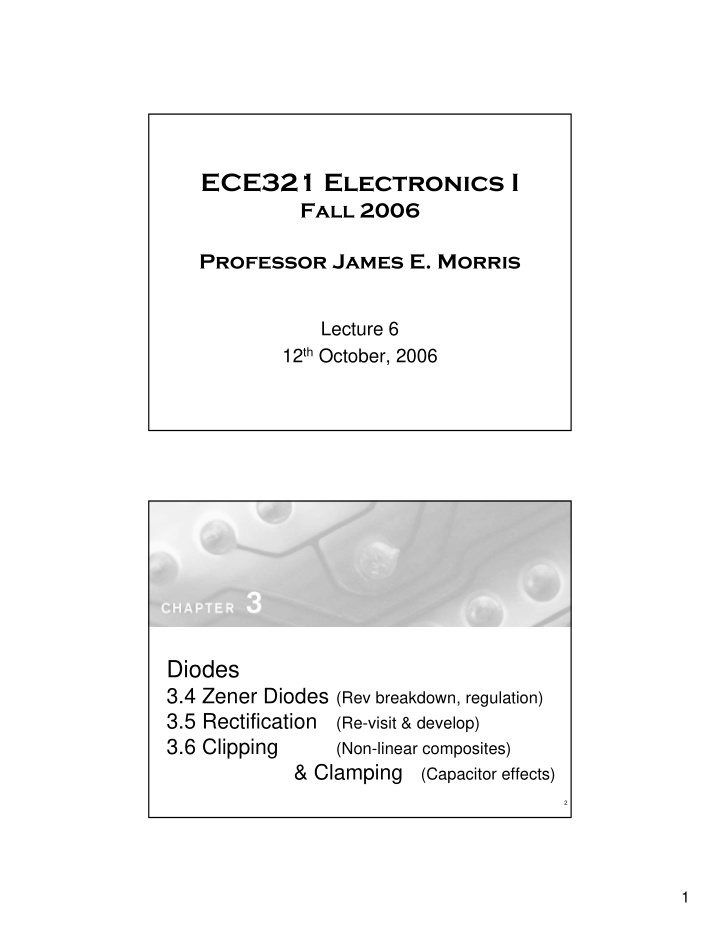



ECE321 Electronics I Fall 2006 Professor James E. Morris Lecture 6 12 th October, 2006 Diodes 3.4 Zener Diodes (Rev breakdown, regulation) 3.5 Rectification (Re-visit & develop) 3.6 Clipping (Non-linear composites) & Clamping (Capacitor effects) 2 1
Figure 3.20 Circuit symbol for a zener diode. Figure 3.21 The diode i–v characteristic with the breakdown region shown in some detail. 2
Figure 3.22 Model for the zener diode. Figure 3.23 (a) Circuit for Example 3.8. (b) The circuit with the zener diode replaced with its equivalent circuit model. 3
Figure 3.24 Block diagram of a dc power supply. Figure 3.25 (a) Half-wave rectifier. (b) Equivalent circuit of the half-wave rectifier with the diode replaced with its battery-plus-resistance model. (c) Transfer characteristic of the rectifier circuit. (d) Input and output waveforms, assuming that r D ! R. 4
Figure 3.26 Full-wave rectifier utilizing a transformer with a center-tapped secondary winding: (a) circuit; (b) transfer characteristic assuming a constant-voltage-drop model for the diodes; (c) input and output waveforms. Figure 3.27 The bridge rectifier: (a) circuit; (b) input and output waveforms. 5
Figure 3.28 (a) A simple circuit used to illustrate the effect of a filter capacitor. (b) Input and output waveforms assuming an ideal diode. Note that the circuit provides a dc voltage equal to the peak of the input sine wave. The circuit is therefore known as a peak rectifier or a peak detector. Figure 3.29 Voltage and current waveforms in the peak rectifier circuit with CR @ T . The diode is assumed ideal. 6
Figure 3.30 Waveforms in the full-wave peak rectifier. Figure 3.31 The “superdiode” precision half-wave rectifier and its almost-ideal transfer characteristic. Note that when v I > 0 and the diode conducts, the op amp supplies the load current, and the source is conveniently buffered, an added advantage. Not shown are the op-amp power supplies. 7
Figure 3.32 General transfer characteristic for a limiter circuit. Figure 3.33 Applying a sine wave to a limiter can result in clipping off its two peaks. 8
Figure 3.34 Soft limiting. Figure 3.35 A variety of basic limiting circuits. 9
Figure E3.27 Figure 3.36 The clamped capacitor or dc restorer with a square-wave input and no load. 10
Figure 3.37 The clamped capacitor with a load resistance R . Figure 3.38 Voltage doubler: (a) circuit; (b) waveform of the voltage across D 1 . 11
Recommend
More recommend